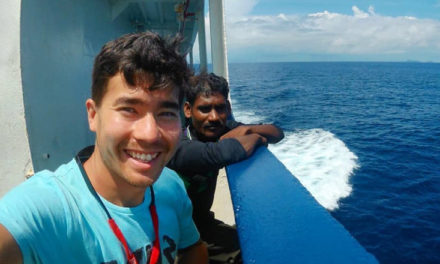When Have We Reached
Tena tātou katoa e te iwi mīhana… (Greetings to all the people in mission),
This month’s whakataukī (proverb) is: “Ko tōku reo tōku ohooho, ko tōku reo tōku māpihi maurea, ko tōku reo tōku whakakai marihi” [Language is my awakening, the window to my soul, my treasured ornament].
This proverb may refer specifically to Māori language, but is applicable to any language. Over the past half-century or more, Western philosophers have argued that language is our only access point to reality, and therefore different languages reveal different experienced realities. This is one of the sources of the “everything is relative” concept. It is not insignificant that Jesus was born as the Word incarnate, and how we relate to Him is somewhat constrained by our contexts and language.
What we understand “missions” to be is relative
Similarly, the reality of what we understand “missions” to be is relative to the language we use. As a leader in the missions community (both here and, now, internationally via a new role as Director of Missions and Evangelism for the WEA), I continually question whether the language that dominates the missions community is still fit for purpose.
For example, take the terminology of “reaching”. Among many of its uses, “to reach” means to connect with another. This is the essence of its usage in missions. We are participating in God’s mission to connect, and communicate the way to eternal life in Christ Jesus. But the term has morphed into something more, particularly since the late 1970s. It has become shorthand for a fairly defined objective.
Partly in response to a call for a conclusion to the foreign missions thrust of the colonial era, the Lausanne Congress in 1974 highlighted areas of the world that had not yet received the message of the gospel in a way they could meaningfully understand it. They had not been “reached”. Having identified this, missions theorists and strategists went to work to further clarify these locations, add eschatological (end times) rationale to the purpose of reaching, and define what constitutes ‘reached’ and ‘unreached’—none of which the Bible defines so clearly.
International missions have long been focused on achievement.
One reading of the history of the ‘modern missions movement’ (post-William Carey) shows that international missions have long been focused on achievement. When it came to deciding the difference between reached and unreached, it was informed by an achievement orientation. This, however, stretches the meaning of the verb “to reach” in unnatural ways. The objective of “to reach” is to make a connection, it suggests nothing beyond that. In this sense, we could argue the whole world has been reached with the gospel message, since (thanks to technological advancements) it is now available in every part of the world, at least in a language close enough to convey its meaning. But that’s not what the missions strategists mean. They have coopted the term to mean establishing replicating churches in all nations (panta ta ethne); every nation, tribe, people and language. This is a fine vision, following the Biblical promise of our future, but it is being questioned for the undertones of conquest it carries when viewed as a human endeavour.
Christian history is replete with examples of the Holy Spirit confounding the strategists and bringing God’s promises to fruition in unexpected ways.
When Jesus referred to panta ta ethne (Matt 28:19) He (and the writers of the Epistles) understood it to mean that no one is to be excluded from the message—it is no longer restricted to the people of God. There is now no privileged recipient. For Jesus, ‘all Gentiles’ is not an objective, it is a scope. What the scope can do is inform us of the opportunity, and we should appreciate the message enough to have some intention to share it broadly, but the scope is not an obligation to do, it is a promise to be realised. The Old Testament prophets repeatedly indicated this. God will do it, He will do it WITH our involvement (contrary to William Carey’s detractors), but the Bible and Christian history is replete with examples of the Holy Spirit confounding the strategists and bringing God’s promises to fruition in unexpected ways.
Jesus never targeted people. Following the Spirit, He ministered to those He encountered ‘as He went’. To avoid the temptation to objectify people who have not had access to or responded to the gospel, I think it is important to separate “to reach” from “to establish replicating churches”. Churches, as gatherings of the People of God in Christ, represent the clearest manifestation of the gospel message being well understood. But a lack of churches does not mean a location has not yet been ‘reached’ with the gospel message in a meaningful way.
Our role in missions is to exemplify and faithfully point toward that light.
We need to come back to the realisation that the gospel is a narrative that illumines the way to life (in Christ’s kingdom) for those who choose to follow the directions. Our role in missions, as it is with ALL believers, is to exemplify and faithfully point toward that light of that life and help those who do respond to live it out. There is no task to complete, it is a life to (overtly) live, wherever we are or go. The very end will come at the appointed time (Dan 11:27). It will likely not come in a way we expect or have planned for, but on that day we are assured the world will have been reached sufficiently with the gospel message—a promise, not an objective.
Who but God can handle such a responsibility anyway?! Reorientating ourselves to missions as the work of the Holy Spirit that we participate in, rather than a strategy that we are controlling, should encourage us to celebrate the leading of the Spirit in each others’ ministries and together motivate us on to #stayonmission.
Whakapaingia te Atua, to tatou kaiunga ki te ao whanui (Praise to God, who sends us into the world),
Jay





